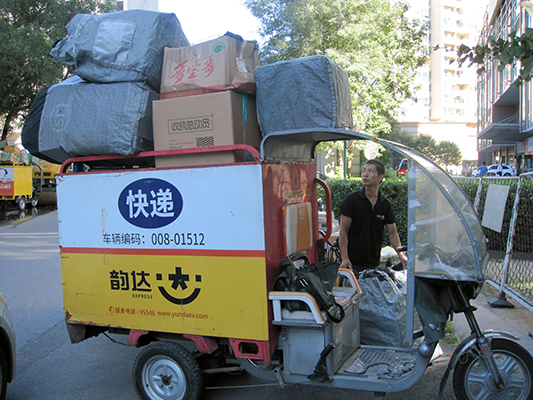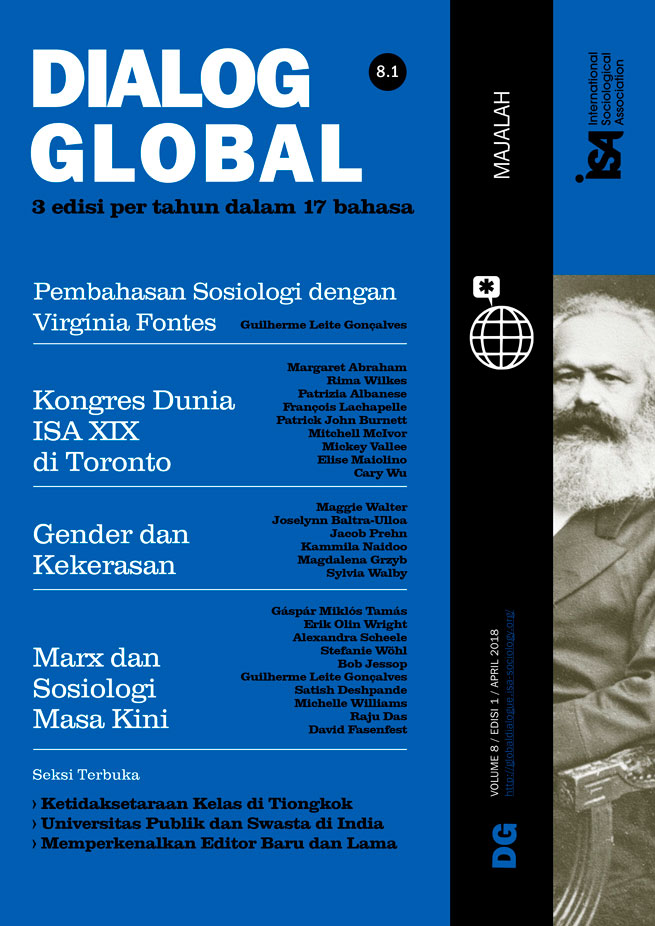Class Inequalities and Social Struggles in China

March 22, 2018
On the night of November 18, 2017, a fire on the southern outskirts of Beijing took nineteen lives, eight of them children. The two-story building, with a basement, was divided into tiny rooms and cramped with tenants for cheap rent. Instead of providing emergency aid to the victims and survivors, the government began to chase away tens of thousands of “low-end” people – as described in the official derogatory terminology – from China’s capital. The deadly fire sparked a city-wide safety inspection campaign and demolition of illegal structures of rented apartments, factories, warehouses, wholesale markets, schools, restaurants, and shops, disrupting the lives of marginalized individuals and families. The mass eviction, which was not the first and probably won’t be the last, ignited an outcry from the civil society, although the voices of protestors were quickly suppressed from mainstream national media. With the rise of global China, low-income citizens continue to struggle for better working and living conditions on the margins of the “high-end” city. And the Chinese state will inevitably be scrutinized for its rhetoric and relentless pursuit of “the Chinese dream” against the pain inflicted on its people.
Production and social reproduction of Chinese rural migrants
China’s rapid capital accumulation was spurred in part by its heavy reliance on a rural-to-urban migratory workforce over the past four decades. By official reckoning some 282 million rural migrants have been drawn into the manufacturing, service, and construction sectors in towns and cities all across the country, an increase of more than 50 million following the economic recovery since 2009, and accounting for one-fifth of China’s total population. City governments have adopted a “points system” granting certain rural migrants, particularly big entrepreneurs, an urban household registration based on criteria such as their ability to buy a house, specialized job skills, and educational attainments. However, even after years of working in the city, the great majority of moderately educated migrants and their children remain second-class citizens, retaining rural residential status and lacking equal access to public education, subsidized health care, and retirement benefits, making possible the suppression of labor costs.

Low-paid migrant workers are often housed in dormitories, which are cost-effective for the employer and conducive to ensuring that workers spend most of their off-hours preparing for the next shift. The socio-spatial boundary between work and life is blurred, helping to ensure that production deadlines are met by facilitating overtime work. The all-in-one, multi-functional architecture of production workshops, warehouses, and residential places was typical of early industrial districts, and is still common in contemporary cities where migrant settlers are concentrated.
In the search for limited personal freedom over their private lives, workers leave the management-dominated collective dormitory to rent private apartments as soon as they can afford to. These are often inexpensive rental rooms with no windows, or only a small window, which are at least a link to the outside world. Some complexes are infested with mosquitoes, rats, and cockroaches. Utilities and property management fees vary widely. As private housing prices have reached sky-high in megacities, workers’ earnings have been eaten up by the landlords.
Blue-collar migrants are selling their labor in food delivery, package delivery, car-hailing and home cleaning services, to name only a few examples, fueling the growth of China’s GDP and the shift from manufacturing to service work. With the continued expansion of the digital economy, tens of millions of new “flexible” jobs mediated by platforms and apps are created. As independent contractors, however, they are not adequately protected by the national labor law; their job security and income stability are minimal. With the shutdown of unlicensed workplaces and unregistered dormitories after the deadly fire, the vulnerability of informal service workers, and their children, as well as many working people from other sectors, came to the fore. Some of them had to pay higher rent for a temporary housing to withstand the freezing cold, while the others had no choice but to leave.
Chinese internal migrants have long been targets in urban governments’ “clean out” efforts. From the city to the countryside, under the accelerated pace of “development” and economic transformation, encroachment of cities on rural farm land and villages has been intensified. Scores of villagers have been displaced, bereft of the ability to return home to till the land. Landless laborers, who have lost their access to household plots in their natal villages, face an added burden: employers are reluctant to hire villagers who have lost the contracted land that supported subsistence, thus requiring employers to increase wages. Rural project contractors, particularly in the construction industry organized through localistic networks, refuse to hire dispossessed peasant workers because they have to pay up-front to maintain the basic livelihood of these workers before they are paid for work, which typically occurs at the completion of the project. Among the jobless, landless migrants are the lowest of the low.
Towards cross-class alliances for system change?
Both nature and labor are at the root of capital accumulation: the faster the pace of capital accumulation, the more extensive the scale of expropriation of nature and subsumption of labor. Land dispossession and proletarization go hand in hand with the advent of capital in Beijing and far beyond. Under the auspices of the provincial and lower-level states, powerful transnational corporations have utilized more agricultural land and rural as well as urban labor to make profits. Grassroots labor struggles, while rooted in local terrains, have to simultaneously confront forces of global capital and the Chinese state at all levels.
The current period of short-lived protest in localized and dispersed sites of resistance across coastal and interior China needs to develop further along intra- and inter-class lines and across the urban-rural divide, building a more broadly based social movement. As scholars and activists, we need to foster stronger unity with the precarious working class and other social classes to fight for labor rights and social justice. A safe workplace and a decent home will not be given but fought for very hard.
Jenny Chan, The Hong Kong Polytechnic University, and member of ISA Research Committee on Labor Movements (RC44) <jenny.wl.chan@polyu.edu.hk>


















